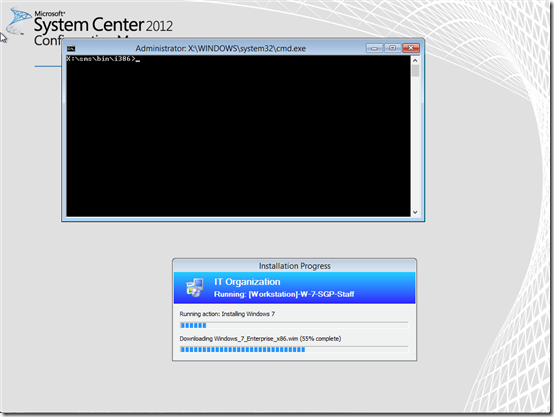SMSTS.log is a log file which is generated to allow the troubleshooting of operating system related Task Sequence failures.
Depending on the deployment phase, SMSTS.log will have the location shared in the following table:
|
Phase |
Location |
|
Windows PE (Before the hard disk are formatted) |
x:\windows\temp\smstslog\smsts.log |
|
Windows PE (After the hard disk are formatted) |
x:\smstslog\smsts.log and copied to c:\_SMSTaskSequence\Logs\Smstslog\smsts.log |
|
Windows Operating System (Before the SCCM client is installed) |
c:\_SMSTaskSequence\Logs\Smstslog\smsts.log |
|
Windows Operating System (After the SCCM client is installed) |
c:\windows\ccm\logs\Smstslog\smsts.log |
|
Windows Operating System (When the Task Sequence is complete) |
c:\windows\ccm\logs\smsts.log |
Reference: http://www.ronnipedersen.com/2014/08/sccm-2012-r2-smsts-log-located/
This Wiki shares with you how you can copy SMSTS.log to a USB key or a network share.
When a Task Sequence Deployment fails with an error, proceed as the following to extract the required log files:
- Click on F8 when the Task Sequence fails to display the command prompt window.
- If you plug a USB drive then make sure that it is mapped (usually it is mapped as E:\ drive so make sure that you can access the drive from the command prompt windows). You can use Diskpart> List Volume command to figure out which drive letter is assigned by the operating system to the mounted USB drive.
- Otherwise, you can manually map a shared folder using net use [Drive_Letter]: \\server\share command where server is your File Server Name or IP, share is your share name and [Drive_Letter] is the letter of your new drive (Example: Z:).
- Use xcopy to proceed with copying the log file. The command to use is xcopy [Source_Folder] [Destination_Folder] where [Source_Folder] is the folder where the log resides (You can refer to the previous table to get the log file location. It is better to copy the parent folder instead of copying only SMSTS.log file as you might find other useful logs inside. To copy all the folder content, you need to specify the location using this format Folder_Path\*.* (Example: x:\windows\temp\SMSTSLog\*.*)) and [Destination_Folder] is the destination folder you would like to use to copy the logs (Simply use the mapped drive of your USB drive or the network share as destination).
Now that you have a copy of SMSTS.log log file, you can examine its content and identify the cause of your Task Sequence Deployment failure.
未经允许不得转载:王冬生博客 » SCCM: How to copy SMSTS.log when a Task Sequence fails
 王冬生博客
王冬生博客